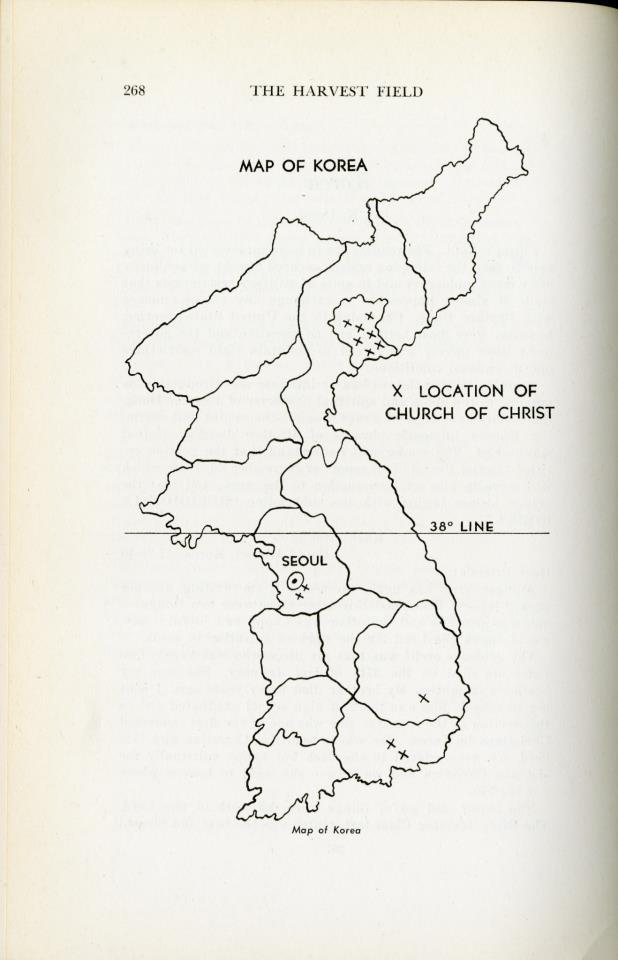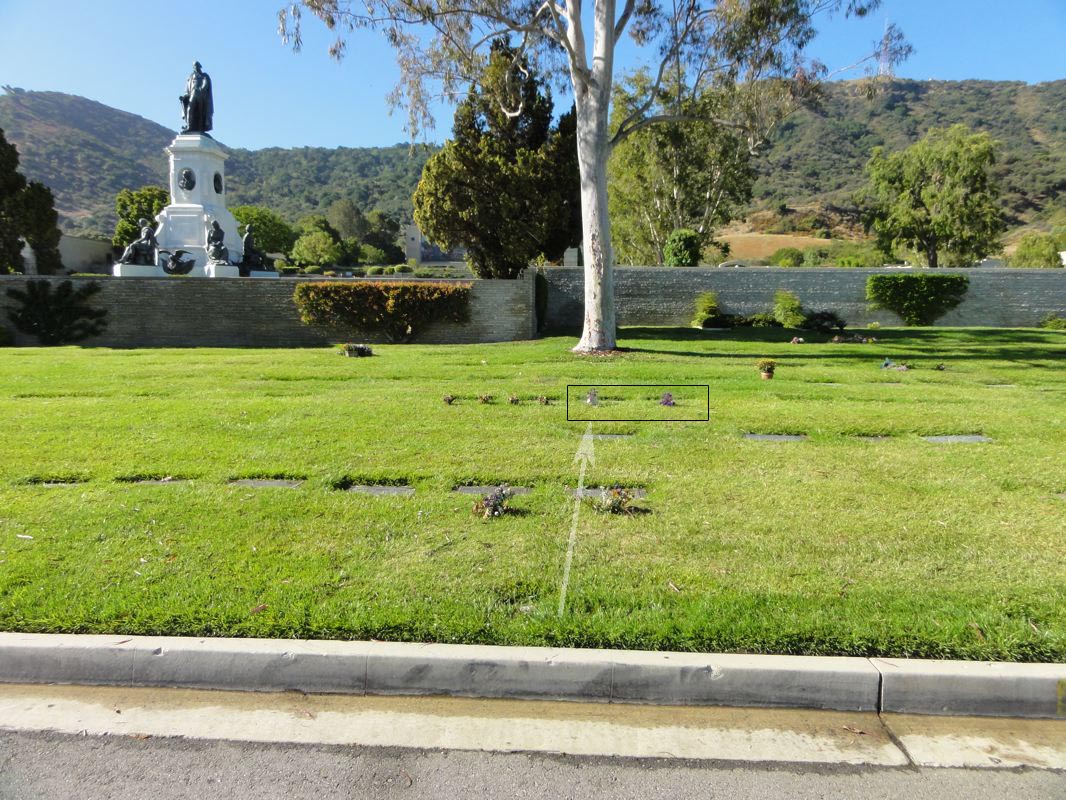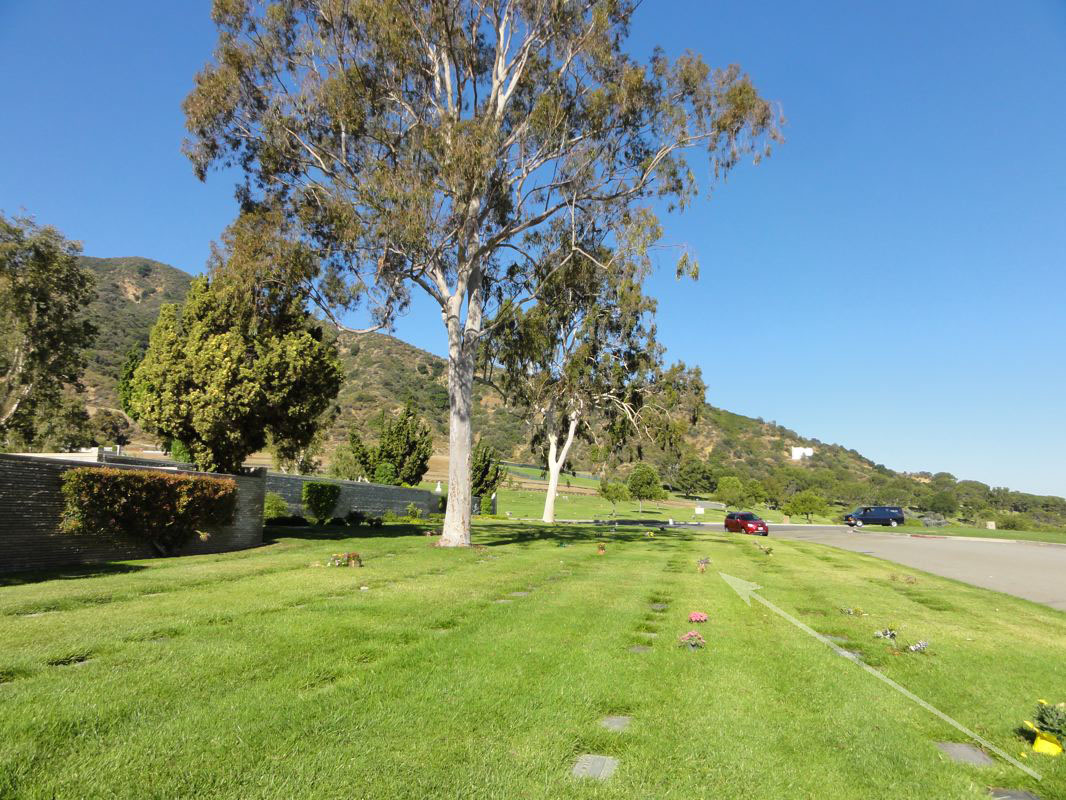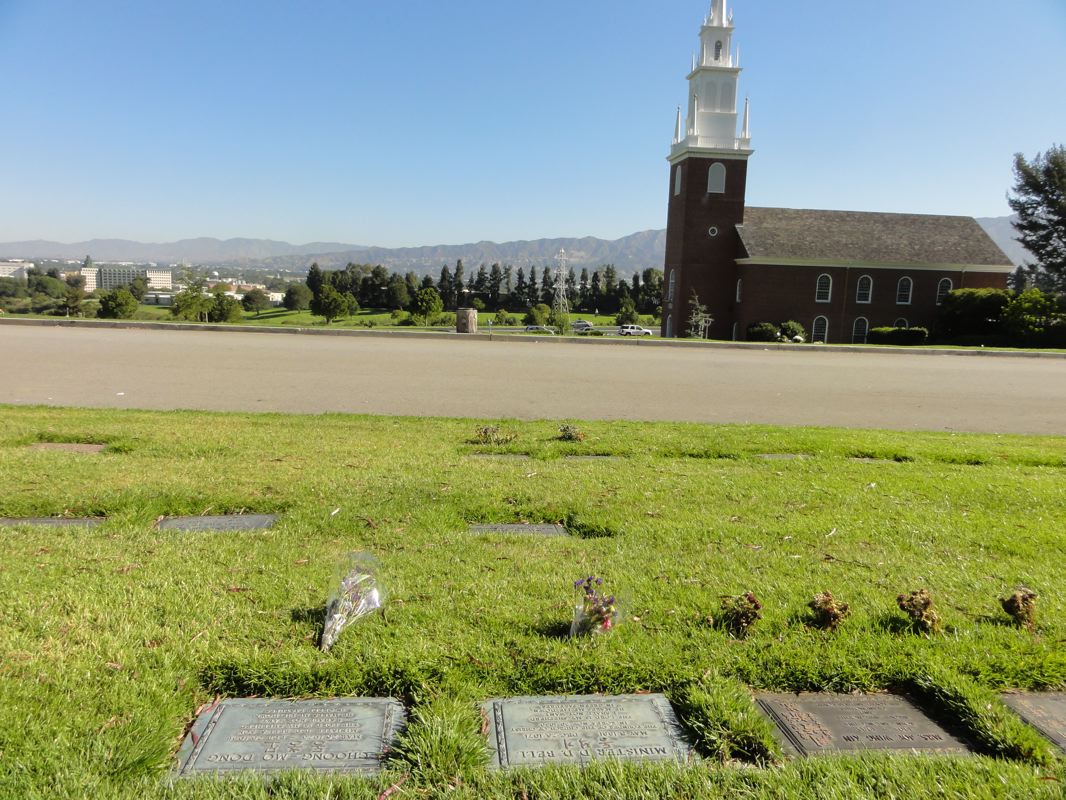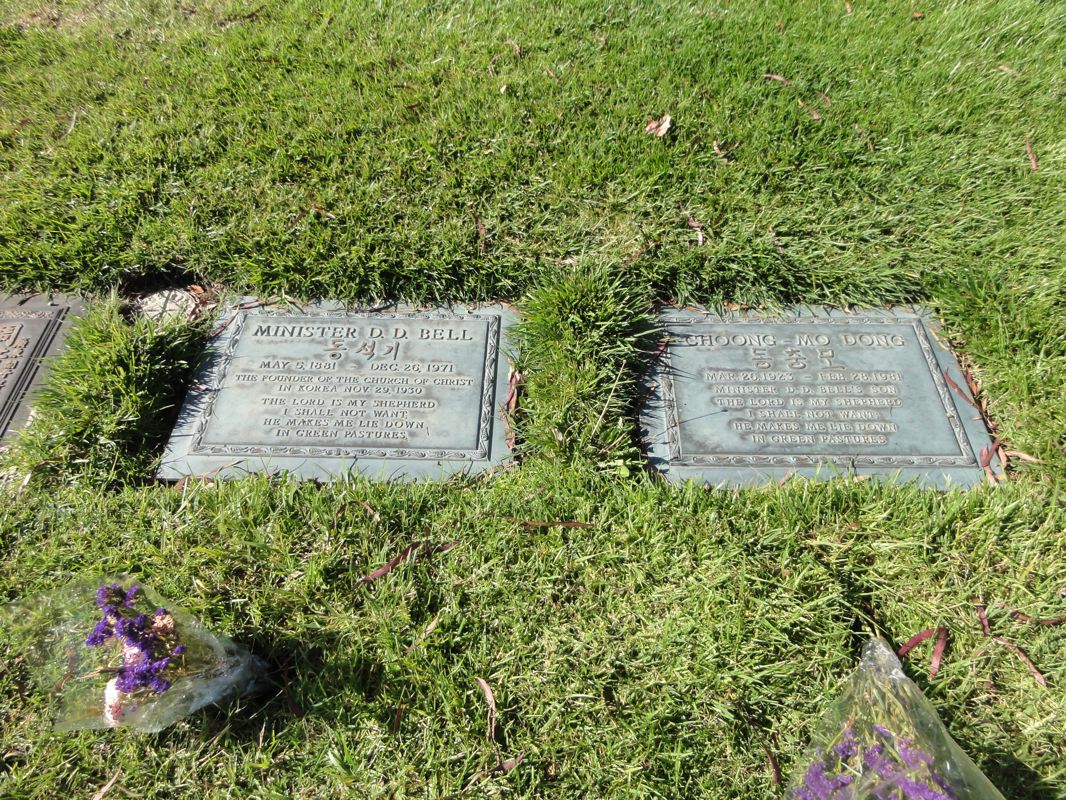*Suk Kee Dong
1881-1971
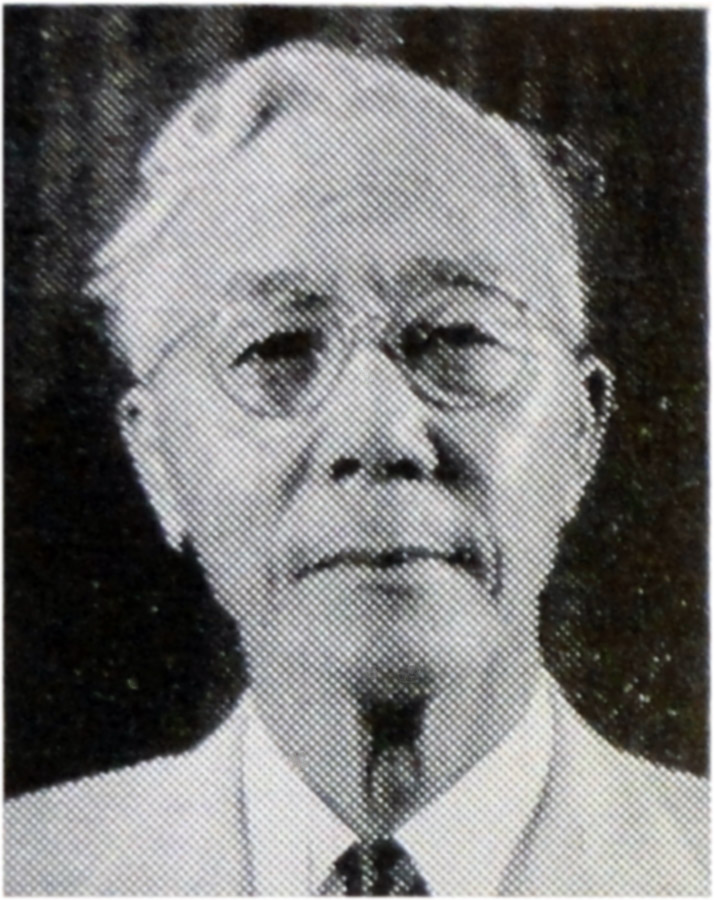
![]()
Korea
S.K. Dong
Editor's Note: The readers are to be congratulated for being able to read the following article, secured almost miraculously after many endeavors and in spike of military restrictions that made it almost impossible to exchange any correspondence with Brother Dong. Chaplains in the United States service, however, were most helpful and co-operative and the government itself merely was forced to maintain rigid restrictions due to unusual conditions.
In order to give the readers as intimate an introduction as possible to the noble and spiritual character of Brother Dong, the editors have kept wherever possible the quaint and charming Korean idiomatic phrases of Brother Dong's original manuscript. The reader will understand that the portion entitled "Korea Bound" is a report of November 20, 1940, which will serve to give an introduction to the work, and that the article proper begins with the subheading "RELIGION IN KOREA."
Korea Bound,Sanki Hoksei,
Korea, 11-20-40
Dear Friends:
Another year has gone, therefore, I am writing another annual report. Since last November there were two things—one was grievous and the other was happy and joyful. Anyway I thank the Lord for the work of salvations of souls.
The grievous event was that my niece who was twenty-two years old died on the 27th of last January. She was my brother's daughter. My brother died many years ago. I sent her to school. She was the first high school graduated girl in this section of the country. She was on of the first immersed Christians in Korea. She was a beautiful Christian girl. Indeed, we were grieved in the flesh but happy spiritually for she was Christian and we believe she went to heaven where our Lord is.
The happy and joyful things were the work of our Lord. The Bible Training Class last winter was the best and blessed one. There seventeen men and one girl whose uncle brought her with him. We had an early dawn prayer meeting every day. Some of them went to the hill and prayed there. Especially, Brother Lee prayed more often on the hill. Indeed it was a wonderful God—revealing time. All of them were crying out to confess their sins to the Lord. They determined to be more faithful to the Lord and to be more Christian example to the people. Indeed, it was a great wonderful event that our Lord revealed himself to the hearts of them and cleansed their hearts to be pure with God and to be hones with men. Just like the time that our Lord went to the temple of Jerusalem, "He drove them all out of the temple, and overthrew the tables." They gave up every bad heathen habit that they had, even the tobacco. Certainly, every one in the class is "a new creature." We thank our Lord with all our hearts for his revelation to us.
I wanted to have one of our loyal missionaries in Japan to visit us and to examine the work of our Lord. I had a correspondence with Brother J.M. McCaleb in Tokyo, Japan, several times last spring. He said one of them will come to Korea last fall. Yet they did not come nor write to me. We wanted to have the baptismal services and establish the churches of Christ when one of them came. But I think they were ready to go back home. So we had the baptismal services last two Lord's Days and established the 6th and 7th churches of Christ
On the third of this month, we had the fourteenth baptismal service at one of the new places. I baptized thirty-one Koreans (nine men, twenty-two women). On November tenth we had the fifteenth baptismal service at the First Church. I baptized seven converts (one man and six women). Indeed, we thank the Lord for them. We had it great happy and joyful time on a small river bank and a beautiful sunshiny day to baptized those who came to Christ to be "buried with Him by baptism into death" and "raised up from the dead by the glory of the Father," and "to walk in newness of life." Certainly, they were happy to wash away their sins, and to put on Christ and to be new creatures. Indeed, they are new creatures and acting as new creatures.
Bro. Youl Ho Lee is one of the baptized ones in the new place. He is an example of those baptized into Christ, dying to sin. to be raised up and to be new creatures. He was a drunkard, gambler, smoker and sick. The last two years, he did all kinds of heathenish things yet had no cure. Since he heard and believed that Jesus Christ is the Son of the living God and Savior of men, he began to come out from the dark sick room into the Light of the world. After he was baptized in His name, his drunkenness, gambling, smoking and sickness have gone away. Now he is the happiest man in his town. Everybody in that town was greatly marveled about him and said, "How did this man become like this?" We thank the Lord for His blessing on him.
Religion In Korea
There are five religions in Korea: Confucianism, Buddhism, Shintoism, Shamanism and Christianity. These five religions are none of them native.
Confucianism
Confucianism came from China, about the second or third century B.C. it can scarcely be called a religion. It is an ethical or philosophical system. Yet the principle of it is ancestor—worship. It is a national religion in Korea. The Koreans believe that the spirits of their ancestors bless them according to their deeds. If they do something bad for their ancestors, their ancestors curse them. Consequently, the Koreans bury their ancestors at the best place they know. They offer lots of food once a year at the tome of their ancestors and at the anniversary of their ancestors' death. It is just like in Old Testament times people that offered food to God. Even now, the Catholic Church worshipers offer incense to God.
Buddhism
Buddhism came from India about the first century B.C. At one time it was the state religion and at another it was utterly proscribed and forbidden by the government. Buddhism in Korea is entirely different from Japanese and Chinese Buddhism. The Korean Buddhists do not marry and have families. They do not eat meat and fish and they live in the mountains, not in the city, town or village. The men and women adopt their sons and daughters from ordinary Korean homes. The Buddhists do not have the national privileges of the other Koreans. Formerly the Buddhists could easily be told from ordinary Koreans because only the Buddhists cut their hair, but now they all cut their hair. The Korean Buddhists are a self-denying people, having no family or social life, living in the mountains, cut off from all worldly enjoyments. They believe just like the parable of our Lord, "a certain rich man and the beggar Lazarus" (Luke 16:19). They believe in the transmigration of souls.
Shintoism
Shintoism came to Korea lately from Japan and its adherents are mostly Japanese. They believe the Emperor is the son of God. There are a very Koreans who believe it.
Shamanism
Shamanism is not listed as an official religion and has no temples or establishments but as a degrading superstition it holds the allegience of the multitudes. The central element is the prevalence of spirits good and bad, which must be appeased and cajoled or exorcised. The spirits of the various elements of nature are good spirits which bring good luck or blessing for the asking. There is a spirit for each disease. The smallpox god, being the most dreadful of all, also being fearfully malignant, and must be propitiated or exercised. There are mean imps called "TOKOBE," which play mischievous pranks on man and cause huh lesser woes and troubles. There are earth spirits, mountain gods and household gods. Therefore, they cannot dig the ground; they cannot go to the top of the high mountain, they cannot start to build a house and they cannot repair the house except on certain days on which days the god is absent from the ground, from the top of the mountain, from the village, and from the house; or they have to offer all kinds of food to the gods as bribes to get permission to dig the ground, to get up on top of the high mountain, to start building a house and to repair a house. If they do it when the gods are not absent or without offerings, the gods get angry and punish them by sending a certain sickness to the family or village. Most of the people who believe in Shamanism are ignorant peasants and low class Koreans. It is entirely a superstition in Korea. I think all nations have some superstitions, just like the negro's "rabbit's foot" and the number "13" in America.
Christianity Entered Korea
One of the most interesting facts a missionary history is that Christianity in both its Catholic and Protestant forms entered into Korea without the direct mediation of a foreign missionary. After the overthrow of the Ming dynasty in China about the middle of the seventeenth century it became necessary for a Korean embassy to visit China each year to pay tribute and receive the Chinese calendar as a sign of loyalty. One of the members of these embassies carried some Roman Catholic books from China to Korea, and these created such interest among a certain group of Koreans that one of them, Pyek I, persuaded a friend, Ri Syeng Huni, son of the Korean ambassador in Peking, to communicate with Christian missionaries and make a study of their religion. Hi did so and he was converted and baptized under the name of Peter. Returning to Korea, he baptized Pyck giving him the name of John Baptist. Such was the beginning of Roman Catholicism in Korea.
These two Christians won other converts and as the conversions multiplied, persecution began and some were put to death. But it is said that by 1795 there were 4,000 Christians in Korea, though no missionary had ever entered the land. In that year a Chinese priest came secretly to Korea, and in six years he gathered 10,000 Christians; in 1801 he was murdered with 300 other martyrs.
Korea was then without a priest for thirty years. In 1831 French priests entered, and in 1839 a second persecution broke out, a French bishop, two priests and numerous Korean Ohristians being put to death. There was a third persecution in 1845 and Father Andrew Kim, the first Korean priest who had been educated at Macao and ordained in Shanghai, was killed; the body of this martyr lies in a chapel at Pyongsan, near Seoul. The fourth and greatest persecution of Christians broke out as late as 1866; the land was drenched with their blood, two French bishops and seven missionary priests being among the slain. The Korean Christians were again without priests for ten years. The persecution spent its force by 1876 when some priests again stole into the country from China. From that day the Roman Catholics have walked assiduously in Korea and have built up a considerable constituency.
Protestantism
Protestantism was also introduced into Korea, from the north without the direct preaching of a resident missionary. Mr. John Ross was a Scotch Presbyterian missionary in Manchuria. Becoming interested in tho Koreans he met there, he learned their language, translated the New Testament and sent it into Korea, by the hands of some Korean colporteurs. Its message took root and when missionaries entered later they found Koreans in rather large numbers studying the Bible and professing Christianity.
The Bible was translated by Mr, John Ross and reached Korea, about 1875 but no Protestant missionary entered the country until 1884. In that year Dr, H. N. Allen, a medical missionary of the Presbyterian Church in China, was transferred to Korea, and though he did not long continue in direct religious work, but entered the diplomatic service, he has the distinction of being the first Protestant missionary in Korea. He established a small medical center and by successfully treating an official who was a relative of the queen he won a place of high esteem and prepared the way for other workers who were so soon to follow.
Many denominations this time turned their attention to Korea. The Methodist Episcopal Church sent a missionary in 1885 and The Australian and Canadian Presbyterians and the Southern Methodist Episcopal Church soon followed. The first three converts were baptized in 1886 and by 1890 there were 100 Korean Protestant converts.
The Korea Revival
The Koreans proved to be unusually receptive to the gospel, so great was the spiritual need of the people. When the foreign missions had become well established, some literature produced, institutions founded, buildings erected or purchased, the native preachers began evangelistic activity in various parts of the country. The result was electrifying. The gospel met exactly the need of the Korean head and swept the country of Korea. It broke out shortly before the beginning of the present century, and kept on until the world-war. The northern city of Pyeng Yang, referred to as "the worst city in Korea," was the center of the revival movement. Here the first missionaries and converts were cruelly persecuted, imprisoned and tortured. This was about 1890 and in 1895 there were only twenty believers in the whole city and only seventy-three in the province. By the prayers and Bible studies of the native believers, the revival broke out and by 1900 Pyeng Yang had 1,182 believers.
This movement spread to other cities. Converts were made by the thousands. Great Bible classes grew up in various centers. Sunday schools in the cities had from 2,000 to 3,000 persons in attendance. In 1907 a Presbyterian Church at Syen Chun had more than 2500 men in its classes, while women's classes enrolled 660. The Pyeng Yang Church reported an average regular prayer meeting attendance of 1,500. In one year the number of Christians at Syen Chun increased from 6,507 to 11,943; here fifteen native evangelists all supported by the local Koreans, gave their entire time to the work.
I think it would be interesting to know how the Methodist Church sent their missionary to Korea. So I will write it before I write how the Church of Christ was established in Korea. There was a nine year old girl in California who heard in the church that there is no Christian in Korea because no one preaches the gospel there. She came back to her home and said to her mother that she would like to give her birthday money which was $9.00 for the missionary work in Korea because there isn't any Christian in Korea among Koreans. She would like to go to Korea to preach the gospel to the Koreans, but she was too young to go to Korea as a missionary. Of course her mother was more than glad to send that $9.00 to the missionary society in New York City. In the same time there was an old man who sheared the same lecture that there isn't any Christian preacher in Korea. He said to himself—"I am too old to go to Korea as a preacher of the gospel to preach to the Koreans; but I can give a check that somebody might go to Korea and preach the gospel to the Koreans." So he made a check of $2,000 and sent it to the foreign missionary society in New York City, to send a missionary to Korea. His name was Dr. Gulture in Philadelphia. There was a young man whose name was Mr. Appenssella in Drew Seminary which is a Methodist school. He heard the same lecture which the 9 year old girl and Dr. Gulture in Philadelphia heard. He said to himself "I would like to go to Korea to preach the gospel of our Lord to these Koreans who are living in the shadow of death that they may have the salvation through Jesus Christ, if somebody will send me there." The Methodist Church foreign missionary society sent the young man, Mr. Appenssella to Korea to preach the gospel to Koreans, with the $9.00 of the 9 year old girl and the check of $2,000 or Dr. Gulture, the old man in Philadelphia. Then Jesus Christ came to Korea with Mr. Appenssella through the $9.00 of a 9 year old girl and $2,000 check of an old man, Dr. Gulture, in 1885. Then Jesus Christ began to call the Koreans—"come unto me and I will give you rest." The Koreans began to hear the hear the voice of the Lord and began to come to Him to be saved. Since then the Methodist Church sent more missionaries to Korea to preach the gospel more and then more Koreans called the name of Jesus Christ to have salvation. I think these stories prove Romans 10:11 to 15.
Motive Of Establishment of Church of Christ In Korea
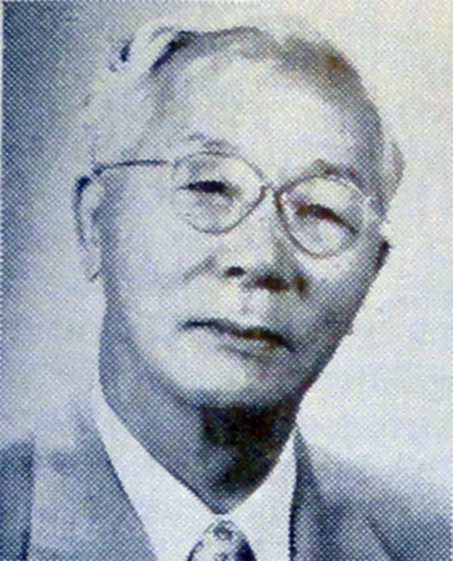 First of all, I must write the motive of how and why the church of Christ was established in Korea. It had some connection with my personal history so I am writing my personal history first.
First of all, I must write the motive of how and why the church of Christ was established in Korea. It had some connection with my personal history so I am writing my personal history first.
I was born and grew up on a farm until fourteen years old. Then I came to Seoul and had a great ambition to he a politician. With such ambition, I tried to get a government position. It meant that I must spend lots of money to acquaint myself with the King's relatives and the high officers of the national government and the prominent men in the country. When I was nineteen years old, I had the first rank of the national government. By this time, my father had to sell his farm to pay my debt. It was the Korean custom that father must pay son's debt and son must pay his father's debt. From then on, nobody loaned me any more money for they knew that my father sold his farm. Then I could not be active in the government circle and no longer stay in Seoul, because I had no money. It was a fact that I had no place to go. If I go back to my home, I must be a tenant of a farm. I did not want to be a tenant of a farm. By this time there was a chance for me to come to Hawaii Island, as an emigrant, so I came to Hawaii Island in 1903, when I was 23 years old. I was there nine months on a sugar plantation, where I began to be a Christian. I gave up all my bad habits—smoking, drinking, gambling and other bad habits. It was very hard to stop them. When I was at home, I did not hear anyone who preached the gospel. Just before I left Hawaii Island to come to the United States I was baptized with water by Dr. Waterman, a Methodist preacher. Of course, I did not know anything about the real baptism. Also I did not believe in Heaven. Only I wanted to be a clean and a good moral man. I was in San Francisco at the time of the earthquake and fire there. At that time I really was converted and believed what the Bible said, yet I did not know the truth of the Bible fully. I came to Evanston, Illinois, to attend the Northwestern University which is a Methodist school, where I learned nothing but Methodism. After I received the diploma 'with the degree of B. D. from Garrett School of Divinity, I came back to Korea, as a Methodist preacher in 1913. I preached for fourteen years Methodism instead of the gospel of Christ.
In 1927 I went back to the United States and was at Cincinnati Bible Seminary accidentally, but I do believe it was providence of our Lord for me. I went to Cincinnati Bible Seminary in the fall of 1928. I am so thankful to my Lord that I went and studied the graduate course there. In the first part of the school year, I had a hard time arguing with the professors and students concerning some of the teachings which the seminary offers. Finally I was convinced that every church must be built upon the foundation of the New Testament instead of upon the man-made creeds—that is, "where the Bible speaks, we speak; where the Bible is silent, we are silent." Yet, I never thought of being a missionary from the church of Christ to Korea, until I finished the school. This seminary did not say anything about the musical instruments in the worship of our Lord. By the advice of the professors of the Cincinnati Bible Seminary, and other friends in the church of Christ, I decided to go back to Korea, as an independent missionary to establish the church of Christ in Korea, according to the New Testament pattern. I never thought of the question of musical instruments in the worship of the Lord, before I went to Montgomery, Alabama, and met Brother and Sister T. B. Thompson and Brother F. A. Decker. It was a new thing in my mind to find out. By giving me books and pamphlets on that topic, they helped me to study the question, yet I did not feel to give it up until I went to Nashville, Tennessee. By the advice of Brother T.B. Thompson I went to Nashville, and learned more about the New Testament doctrines through the preaching of Brethren H. L. Calhoun and C.R. Brewer. Finally, I gave up the musical instrument in the worship of our Lord. Then I gave up absolutely everything outside of the New Testament, to worship the Lord in truth and spirit, with a pure heart. Then I determined to come back to Korea, to preach the gospel of Jesus Christ to the Koreans and to establish the church of Christ in Korea if there was somebody who would send me back to Korea for the same purpose.
Church of Christ In Korea
I thank our Lord that Waverly-Belmont Church of Christ and 12th Avenue Church of Christ in Nashville, Tennessee, and Catoma Street Church of Christ in Montgomery, Alabama, and other churches of Christ and friends individually sent me back to Korea, to preach the gospel of Christ in Korea. So, I had money enough by the help of them to come back to Korea, and my Lord was with me to call the Koreans through my lips "come unto me and I will give you rest," and to say "Upon This Rock I Will Build My Church."
I took the boat on October 19, 1930, at San Francisco, California, and arrived at home on November eighth. On the next day when I began to preach the gospel of Jesus Christ only, I got a letter from one of you friends in America, Mrs. Mary E. Woodson, at 758 Newport Avenue, Long Beach, California, as follows—"We cannot tell you how much we enjoyed your sermon Sunday. Deep in my heart I thanked God many times since . . .you are in position to lead your people to God according to His word. I enclose a check ($10) for you with my prayers and best wishes . . . may God bless and guide you and lead you to labor faithfully and to give Him the glory and praise." She sent another check of ten dollars to forward to Brother McCaleb in Japan. Indeed, I thanked the Lord for her prayerful and helpful letter which encouraged me very much in the work of our Lord for the Koreans.
By the blessings of our Lord and the prayers of you friends in America, I preached the gospel of our Lord earnestly to the Koreans in my home town three weeks consecutively. I tried best I could to show the truth to my dearest and nearest ones first that they may "know the truth and the truth shall make (them) free." The result was that there were twenty Koreans "who wanted to exalt the Christ as the Lord and the Bible as the all-sufficient rule of faith and practice instead of exalting men and man-made rules.
Therefore, on November twenty-ninth, I baptized in the name of our Lord 20 Koreans (10 men and 10 women) in the ice-caked river, for the weather was very cold in that part of Korea. Seven of them came out from the Presbyterian Church, one of them (my wife) came from the Methodist Church and twelve of them were the new converts. It was the first time in this part of Korea, that the baptismal service was held on the bank of the river. There were crowds of people to see the baptismal service. Some of them said "how could they take a bath in the ice-caked water? If they will do it, they will get sick and surely be death." Thank the Lord that not one of them was sick and dead. They were all well and happy, "who were baptized into Christ Jesus were baptized into His death, that like as Christ was raised from the dead through the glory of the Father, so (they) also might walk in newness of life." Indeed, they were "Having been buried with Him in the God, who raised Him from the seat."
Then we came to the place where we were having the meetings, to have the communion service. We had a very nice communion set, a silver-plated one, which was given to me by the Twelfth Avenue Church of Christ in Nashville, Tennessee. I thank the friends in Twelfth Avenue Church of Christ that they had confidence in me that I will use the communion set soon after I arrived in Korea. After the preaching and the communion service, we elected three deacons and one treasurer and four Sunday school teachers. There was one woman selected to be the teacher of the girls' class. It was the first event to establish the first church of Christ in Korea, on the foundation of the New Testament pattern. So the real church of Christ in Korea was established on November 29, 1930, although there was a church of Christ in Seoul, which was established by Mr. Cunningham of Japan. He was an independent missionary from the progressive brethren that is that he uses the musical instrument in the worship of our Lord. I think that following evidences are enough to call it the church of Christ.
1. It has immerse Christians only.
2. It has elders and deacons as in the New Testament.
3. It has communion service every Lord's Day.
4. It has preaching service every Lord's Day.
5. It has Bible study every Lord's Day.
6. It has no instrumental music.
7. It has no infant baptism.
8. It has not organization.
9. It has no sprinkling.
10. It has no man-made rules.
On May 22, 1931, the second church of Christ was established when Brother J.M. McCaleb in Tokyo, Japan, came to visit me and to help the work of our Lord here. Brother McCaleb and I went to one of the new places and had the baptismal service on the river bank to baptize thirty-one Koreans (six women and 25 men). It was wonderful that the sun was shining beautifully and a great crowd of Koreans were on the river bank who came out from the villages and on the roadside who were having a journey (Fro the main road is nearby) to see the baptism. There were four Presbyterian church members and one of them was elder and all the other twenty-seven were new converts. One of them was my nephew who lives about ten miles from there, where I wen on that Saturday and talked to him about the salvation, how to have it. Next morning he came to be baptized for the remission of sins.
In this way, the third church and fourth church of Christ were established in the Buk-Chung County of South Ham-Kung Province. This province belonged to Canadian Presbyterian Church mission. All of the people there know the Presbyterian Church as the only Christian church. but I am glad that most of the people in this province now understand that the church of Christ is the real name of the Christian church. I do believe that all of the people in Korea will know the church of Christ is the real church is the real name for the Christian church and they will do it. There were established seven churches of Christ in this province. It is shown in the map. But I am very sorry to say that Communists make all kinds of trouble in the churches. Some of the churches could not have the services on the Lord's Days because this province is in the north of 38th degree of North Latitude where Russian Army is occupied. I hope the 38th degree line will be taken away soon.
The churches in the north of the 38th degree are having very hard time now. Many denominational preachers and Christians are in the prison. I left my home there before the Russian Army occupied northern Korea. if I were there, I am sure the Communists would put me in prison because I am a preacher and was in America. I came to Seoul last September and established a church of Christ in Seoul. I am glad I have a chance to establish the church of Christ in Seoul in the beginning of my work in Korea, but I wanted to preach the truth in my home town and my own province first.
We have two churches of Christ in Seoul now. One was established by Brother Mon Suk Kang some years ago. He was in Nashville, Tennessee, when I was there in 1935. At that time, when I spoke in Waverly-Belmont Church of Christ in Nashville, Tennessee, in the morning service of our Lord's Day, Brother Kang was there and he was interested in the church of Christ and he was baptized by one of the elders there that night. Right after that he graduated from Vanderbilt University in Nashville in 1935. Then he wanted to be a preacher of the church of christ instead of the Methodist church. So I, and the brethren in Nashville, advised him to go to one of the colleges of the church of Christ to know the truth fully and acquaint the brethren more. He was at Freed-Hardeman College one year and come back to Korea in 1936. Brother Kang was permitted formally by the church of Christ everywhere in Korea in 1937. He did good work. But I am very sorry that he had gone to his permanent home in 1940. Brother Back is in Brother Kang's place now. There were some churches of Christ established in southern part of Korea by Brother Kang. But they are very weak and some of them are not having the services on the Lord's Day since Brother Kang died. I am sure, in Brother Kang was working on continually there would be good results. I am very sorry that he has gone.
Present Condition
It is a fact that since the war began between Japan and China, the churches have suffered more from Japanese most tyrannical government. Yet the Korean Christians had a long patience till the great event of Korean liberation came. Indeed, it is wonderful that we Koreans have the liberation from Japanese oppression by the love and sacrifices of American friends. All of the Koreans are thankful to Americans. Even the Communists believed that the victory of the world war came by the power of American Christian nation. I do believe that we Koreans will follow you Americans to be the Christian nation in the East. I do believe that God will bless us to be a strong Christian nation in the future. The national leaders in Korea now are Christians except the Communistic leaders. The higher and most of the officers of the American army are good Christians. They are trying to help the Koreans to be a Christian nation in the East. I am sure Korea will be the first Christian nation in Asia. You know Koreans are very religious. Of course it will take some time, but I hope it will take not longer than the last part of the twentieth century.
I am sure it is the time to do a great missionary work in Korea. The great event of Korean liberation brings a new national activity in many ways. Especially as I am a religious man it is a great time to be active in the work or our Lord. Of course, most of the Korean are active in politics, because it is a new thing for them and a great privilege for those who have an ambition in the political circle. I do believe that we must build up our independence on the foundation of Christianity. So we need more missionaries from America. You know the denominational churches in America sent hundreds of missionaries to Korea up to the second world war. I do believe they will come back to Korea, those who were here before the war. Some of them already come back to Korea to do the work of our Lord in Korea. Of course some of them are doing the work of military government. Yet they are helping the missionary work indirectly. You know we have no American missionaries from the church of Christ. Now we want to have the missionaries from the church of Christ as many as possible, if you friends will send the missionaries to Korea now they will bring much more results than the missionaries before the event of Korean Liberation because they will be absolutely free to do the missionary work while the missionaries before were oppressed by the cruel Japanese government.
Concerning the living expenses in Korea for the American missionaries, it will be comfortable living for them if they will have about the same amount as the ordinary people have in America. Of course, it depends on family, how large or how small. I think it will be about $250 to $300 per month for American missionaries and $150 to $200 per month for the Koreans who have a higher education. In Korea, it is just like in the United States, for those who have higher education their living expenses are higher; those who have low education, their living expenses are low. In Korea, now everything is high. An apple costs twenty-five yen and an egg is three to five yen, which was three or five sen. Indeed, it is very hard time for those who are living on the salary, but I think it will be right for the missionaries if they will have $300 per month or a little more.
The churches of Christ which I established are in the country towns. So they are small congregations. During the war by the cruel Japanese oppression, some of them have gone back to their heathen place. I am very sorry for them. I hope they will come back to our Lord again and have the peace and joy in their hearts. Those Christians who are in the church have real faith in the Lord to overcome the persecutions. I thank our Lord for them. The Japanese government forced all the denominational churches to be one Japanese Christian church. That is that the Christians must worship the emperor first. We of the church of Christ did not join with them. We did worship our Lord just the same. All the churches of Christ has the church service on the Lord's Day. But the third church of Christ stopped the church services on the Lord's Day because the Christians there had not faith strong enough to overcome the Japanese cruel persecutions. I hope there will be the church of Christ again for the sinful Koreans. The churches in the north of 38 degrees north latitude are having very hard time now, because the Russian army has occupied and the Korean Communists make all kinds of trouble. I want to go to my home to do the work of our Lord there but it I will go there the Communists will put me in the jail, because I am a preacher and was in America. I could not go back to my home until the 38 degree line will be broken down. I hope it will be broken down very soon. Of course, you know that by the 38 degree line, Korea is cut in two just like a man is cut in two. I am very anxious to go back to my home and to visit the churches of Christ and help the weak Christians to be strong in faith and to bring new converts into the church to be saved by the grace of our Lord. I do know the Christians there want me to come. But at present condition, I could not go there now. One of the deacons at the fifth church of Christ, Brother Lee, was beaten by the Communists and was in the hospital. He is one of the best and faithful Christians in the church of Christ because the Communists think that he is too much faithful and too much active in the work of our Lord.
Since my last report of the church of Christ in Korea, ("Korea Bound" November 20, 1940) we built the seventh church building in Soo-Sur Ree. Brother Lee Bong San was the first young man who came to our Bible training class form Soo-Sur Ree. He was one time a member of the Holiness church, but he was a backslider about four years. Through the Bible Training class, he had a real truth in his heart. Then he began to preach to the people in his town, not by the words only, but by the deeds in every way. They began to see his difference win his living and in his deeds. So one man wanted to be Christian and others wanted. By this way, they began to have a prayer meeting. Of course, I went there as often as I could to help them. You may remember that I told you in my last report that we raised $135 to build the church building, after the baptism, because the private house is too small for us. Now we have a nice new church building there. The poor Christians did the work very hard. They gave money as much as they could. The women folks have no money, so they took one spoonful of rice from each of family before cook the rice every meal and saved it and bring it once a week to church for the building fund. It was little but they did continuously just as the bees and ants are doing. Finally, we succeeded to build the church building. Of course, I did help them by giving of all the wooden materials, tiles and windows. It is a very nice and good looking church building. The Christians are very happy to worship our Lord in the new building. I wish some of you friends will come to Korea, and visit us and worship our Lord in this nice little church.
We were very happy to have American brethren who came to us to worship our Lord with us. Brother Lt. N.S. Bryan of Birmingham, Alabama, and Brother Ralph Myers of Canton, Ohio, came to us first to worship our Lord with us. Brother Lt. C.E. Crouch of Morristown, Tennessee, with two brethren, J.H. Stiles and S. Yarbrough, came to us to worship the Lord with us. I thank the Lord that they came to our congregation which is inconvenient for them in every way, especially they do not understand our language although there is an American congregation which is very convenient for them with a fine English preaching service by a chaplain and beautiful music. Brother Bryan and Brother Myers usually came to Nai-Soo Chung Church of Christ at one time and another time go to Kong-Duk Chung church of Christ. In this way, they help us equally. Brother Crouch and other brethren somewhat did the same way to help us. I think it is wonderful that they came to Korea and worshipped our Lord with us. Brother Bryan said that he was a treasurer of the church of Christ in Birmingham and made some checks for Brother Kang. Kong-Duk Chung church of Christ was established by Brother Kang and the building was purchased by him. I am sure, it is a fact that if Brother Kang were not sent back to Korea by the brethren in America, and they did not help him to establish the church of Christ, there would not be a Kong-Duk Chung church of Christ in Seoul. Also it is a fact that if there were not Nai-Soo Chung church of Christ and Kong-Duk Chung church of Christ in Seoul, the military brethren could not find the church of Christ in Seoul, Korea, to worship our Lord in truth and to have the communion service. Those brethren are in America now. I got a letter from brother Crouch a few days ago saying that he is trying to help the work of the Lord in Korea for Koreans.
I may tell something about my family—our daughter Yangsona, twenty-five years old who was planned to go to Abilene Christian College, she finished the Ewha Girls' College in Seoul, Korea, in 1943 and married in 1944. Now she has a baby boy. Her husband is a teacher in the public school. She teaches in the school too. So they are taking care of themselves. Our older boy Chungmore, twenty-three years old, finished the Seminary last year. He is helping me in the church work. He also married last year and has a baby boy. So I have three grandchildren now. Now I have a big family and my family duty is very heavy, so my hair is very white.
On May nineteenth I baptized eight new converts (five men and three women). One of them was our son-in-law. It is my first baptismal service in Seoul. I hope our Lord will save them all. Now we have fifteen immersed Christians in Nai-Soo Chung church of Christ. We will have again a baptismal service very soon in Nai-Soo Church church of Christ. This church is growing in number of members and in wisdom of our Lord. I am sure this church will be the strongest and best church in Korea, some day in the future.
I would like to go to America again as soon as the civilian transportation will be open, to visit you brethren and report the work of our Lord in Korea, and tell the needs of the work of our Lord. I am sure you brethren also want to see me "face to face" to hear the conditions of the churches of Christ in Korea.
Finally, I want to say that we want to have American missionaries as soon as possible. We do need them. Brethren, please send your missionaries to the most needed field. Indeed, Korea is white already to harvest.
I send you my best wishes.
Your brother in Christ,
S.K. Dong
—The Harvest Field. Howard L. Schug and Jesse P. Sewell, Published by Bible School Bookstore, Athens, Alabama pages 267-285
Special thanks to Jeremy Hegi for providing me a copy of this paper and other source material that he found at the Centery For Restoration Studies, Abilene Christian University,
![]()
Restoration History by S.K. Dong
![]()
Suk Kee Dong, Missionary To Korea
courtesy of Terry J. Gardner
![]()
Korean Missionary Work: 1930-1974
_________________
A Term Paper
Presented to Professor Earl I. West
Harding Graduate School of Religion
Memphis, Tennessee
_________________
by
Rubel Shelly
Spring 1975
I. Backgrounds of the Church In Korea
No American evangelistic work had been undertaken in Korea prior to the end of World War II and the partitioning of that country upon the defeat of its Japanese rulers. Having taken control of Korea in 1910, Japan governed it to selfish ends until Russian troops occupied southern Korea in 1945. In 1948 Korea was divided into two nations. In the south, the Republic of Korea was formed on August 15 with Syngman Rhee as its elected president. In the north, the Communists formed the Democratic People’s Republic of Korea on September 9. Both governments claimed to represent the total population of the country. Given the military and political conditions of the time, it is unlikely that a foreign missionary could have don an effective work during this tense period.
The fact that no Americans had worked in Korea prior to World War II is not to say that the church of Christ was unknown to the country. The modern move toward the simplicity of New Testament Christianity in Korea began as an indigenous one in 1930.
S.K. Dong (Also known by the name Tong Sok-ki) was a native Korean who was converted to Methodism in 1903 while working on a sugar plantation in Hawaii. Following his conversion, he traveled to the United States where an experience occurred which prompted him toward Methodist ministry. He later wrote of it:
I was in San Francisco at the time of the earthquake and fire there. At that time I really was converted and believed what the Bible said, yet I did not know the truth of the Bible fully. I came to Evanston, Illinois, to attend the Northwestern University which is a Methodist school, where I learned nothing but Methodism. After I received the diploma with the degree of B.D. from Garrett School of Divinity, I came back to Korea, as a Methodist preacher in 1913. (S.K. Dong, “Korea,” in The Harvest Field, 1947 ed., eds. Howard L. Schug and Jesse P. Sewell (Athens, Ala.: Bible School Bookstore, 1947), p.277)
Dong preached for the Methodist Church in Korea for fourteen years. In 1927 he returned to the United States to further his education, and, to again use his words, “was at Cincinnati Bible Seminary accidentally, but I do believe it was providence of our Lord for me." (Ibid., p.277). Here he first contacted the plea for the restoration of New Testament instead of upon the man-made creeds.” (Ibid.) After completing his work in Cincinnati and while traveling in the southern United States prior to his return to Korea, Dong was first led to give thought to the question of instrumental music in worship. While in Montgomery, Alabama, T.B. Thompson discussed this issue with him.
By the advice of Brother T.B. Thompson I went to Nashville, and learned more about the New Testament doctrines through the preaching of Brethren H.L. Calhoun and C.R. Brewer. Finally, I gave up absolutely everything outside of the New Testament, to worship the Lord in truth and spirit, with a pure heart. Then I determined to come back to Korea, to preach the gospel of Jesus Christ to the Koreans and to establish the church of Christ in Korea if there was somebody who would send me back to Korea for the same purpose. (Ibid. Note: In spite of the abrupt break with the so-called “Church of Christ (instrumental)” indicated in Dong’s account, it appears that he worked with some of their missionaries for a time immediately following his return to Korea. Cf. Allen D. Clark, A History of the Church in Korea (Seoul: Christian Literature Society of Korea, 1971), pp. 342-43. I was not able to learn the details of his separation from them. The Christian Church came to be in Korea shortly prior to 1930 as a result of the native efforts of Song Nak-So and help from Mr. Cunningham of the Japanese Christian Mission.)
II. American Support For Korean Work
Three American congregations—Waverly-Belmont and 12th Avenue churches in Nashville, Tennessee, and Catoma Street Church of Christ in Montgomery, Alabama—took the initiative in raising the necessary funds and sending Bro. Dong to establish the church in Korea.
Upon his return to his native province of Hamkyung Do (in what is now North Korea), Bro. Dong preached the gospel for three weeks consecutively and 20 people were converted. The ten men and ten women (one of them Dong’s wife) thus converted were baptized on November 29, 1930—the date which Dong regarded as the establishment of the “real church of Christ in Korea.” (Ibid., p.279)
J.M. McCaleb visited the new congregation in 1931 and assisted in establishing a second. On May 22, 1931, McCaleb and Dong baptized 31 people in a nearby village. The work continued to grow until there were seven churches in the northern part of Korea by 1940 and five in the southern part. Mon Suk Kang was converted while in America in 1935 and returned to Korea to work with Bro. Dong the next year. It appears that he established the first congregation at Seoul and was instrumental in the early work in all the southern part of the nation. Unfortunately he died in 1940.
Christians in Korea were subjected to severe stress in the last days of Japanese rule.
The Japanese government forced all the denominational churches to be one Japanese Christian church. That is that the Christians must worship the emperor first. We of the church of Christ did not join them. We did worship our Lord just the same. (Ibid, p.283.)
Brother Dong admitted that a few members lapsed into unfaithfulness during this time and at least one congregation discontinued meeting.
As the Russian Communists took control of the northern part of Korea at the end of World War II, the persecutions grew even more intense. Many Christians became refugees and helped strengthen and establish congregations in the southern part. The state of the churches in the north during this period is unknown; the remainder of this paper must therefore deal only with conditions in the south.
-Source: The paper above is but a portion of a larger paper composed by Rubel Shelly in a class with Earl I. West at Harding School of Theology in the Spring of 1975. The rest of the paper discusses work in Korea beyond the years of S.K. Dong's involvement. Special thanks to Jeremy Hegi for providing me a copy of this paper and other source material that he found at the Center For Restoration Studies, Abilene Christian University.
![]()
Directions To The Grave of Suk Kee Dong
Suk Kee Dong is buried in the Forest Lawn Memorial Park off Ventura Highway in northern Los Angeles, California. The cemetery is in one of the most beautiful settings in Southern California. Not far from Warner Brothers Studios, the cemetery is located on Forest Hills Road. North of Downtown LA take the I-5 to the Ventura Highway connector Exit 144B and head west. The second exit will be the Forest Lawn exit. At the exit turn left. Go under the bridge and turn right at the light. You will pass a large cemetery on the left. This is not Forest Lawn. Continue on and you will see Forest Lawn on the left. The visitation hours there are between 8am and 6pm, 5pm during the winter. When entering the cemetery head straight into the park and proceed to the rear of the cemetery. There will be a big church building straight ahead, called the Old North Church. To the right will be a large area dedicated to the patriots who settled America. At the front corner of this great section, and just across from the Old North Church is where the grave of Suk Kee Dong lies. When standing on the street in front of the Statue of George Washington, do not go up the stairs. Begin making your way right on the street to the corner of the plot. As you go you will not that the wall on your left tapers abouth three or four times into the section. When the wall tapers the first time, enter the section in direction of the turn. The plot will be about three or four rows in. Plot: Court of Valor, Map H01, Lot 5572, Space 1.
While in the cemetery be sure to visit the grave of two former presidents of Pepperdine University: Howard Ashley White & M. Norvel Young.
NOTE: The grave will render the name "Minister D.D. Bell," not Suk Kee Dong, which is his original name. If you go to the office to get a map to the grave, be sure to ask for the name "Ding Dong Bell," the name by which he was known among American Christians.
GPS Location
34.144741,-118.317778
View Larger Map
![]()
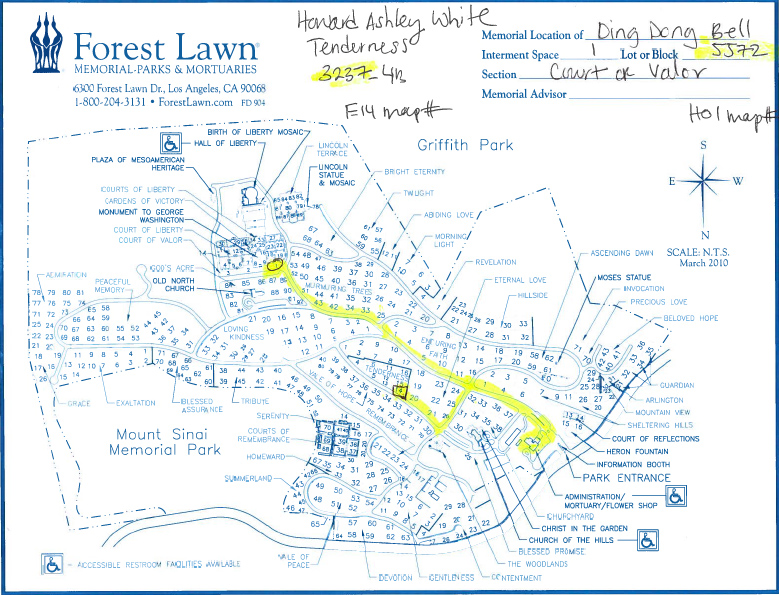
Click On Map For Closer Look At Location of S.K. Dong's Plot
Also Designated on the map is the plot of Howard A. White
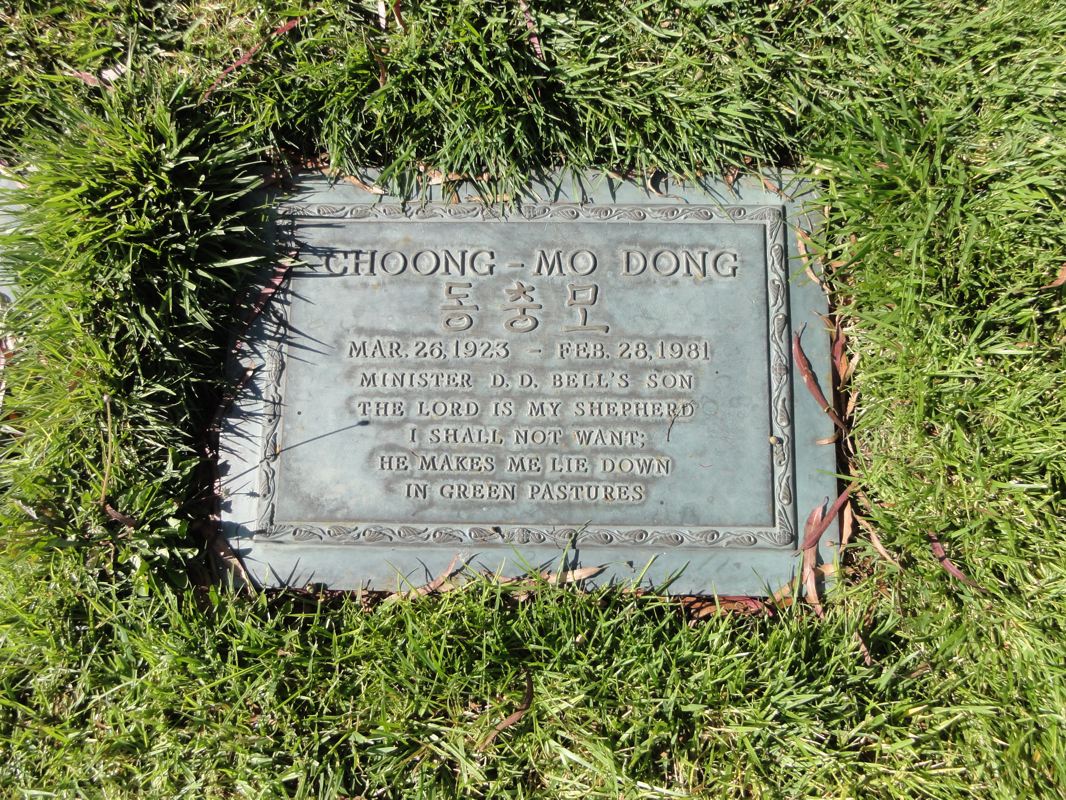
Choong-Mo Dong
March 26, 1923 - February 28, 1981
Minister D.D. Bell's Son
The Lord Is My Shepherd
I Shall Not Want
He Makes Me Lie Down
In Green Pastures
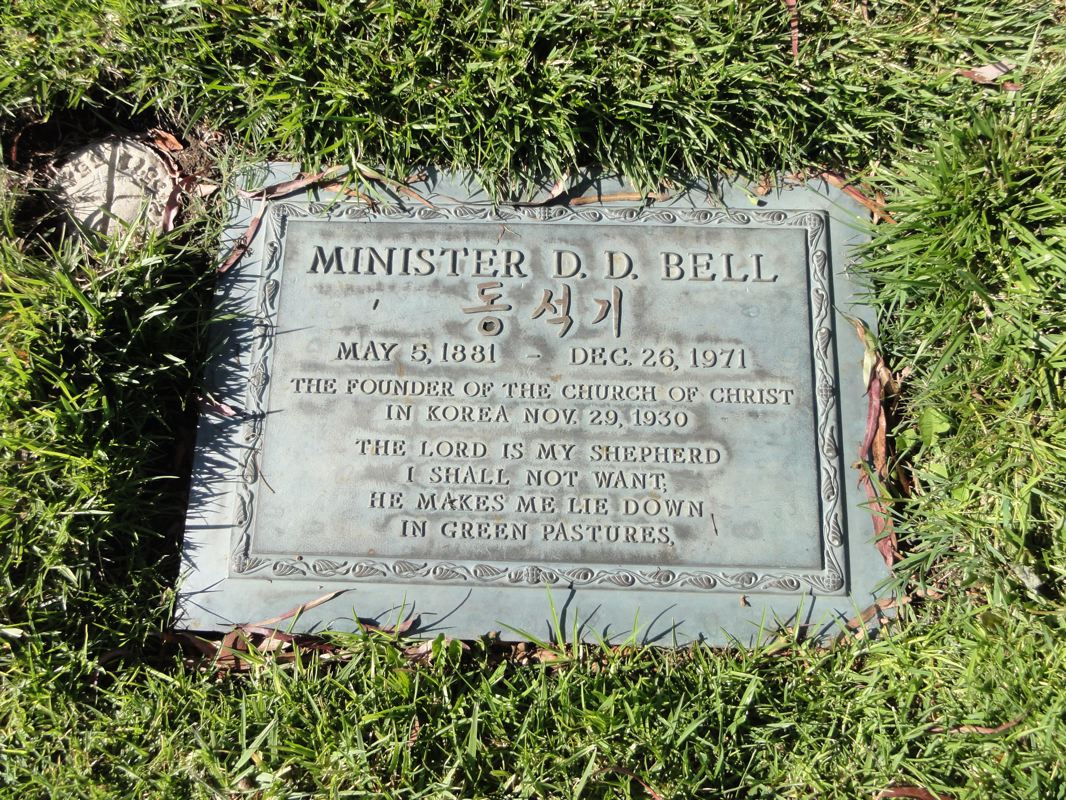
Minister D.D. Bell
May 5, 1881 - December 26, 1971
The Founder of the church of Christ
In Korea November 29, 1930
The Lord is my Shepherd
I shall not want;
He makes me lie down
In green pastures.
![]()
Photos Taken June 25, 2012
Courtesy of Scott Harp
www.TheRestorationMovement.com
*Suk Kee Dong was also known among American churches as Ding Dong Bell. His grave marker records him as Minister D.D. Bell instead of his given name.
Comments by your web editor: Some years ago, it was my pleasure to hear of the life and work of Suk Kee Dong. The story was that he had been the first preacher after the New Testament order in Korea. What caught my attention was the idea that brethen in America referred to him as Ding Dong Bell. Oddly enough, it was the name he was referred to in the U.S. as a name of endearment, a name he wore with pride. Not long ago, I found out that he was buried in the Forest Hills Cemetery on the Ventura Highway in northern Los Angeles, California. I had visited the cemetery two or three years before, and never realized until I visited in 2012 that I had walked right past his monument then and never realized it. In June, 2012 I spent three weeks in the Fiji Islands working in the Pacific Islands Bible College. On my way home, I had a 30 hour layover in Los Angeles. I want to personally thank Dr. Jerry Rushford and his wife Lori, of Pepperdine University, for their hospitality and assistance during my stay. Also assisting me in obtaining information for this site is Jeremy Hagi, who posted information on S.K. Dong on the Friends of The Restoration page on Facebook in August, 2012. Producing this site on the 18th of August, 2012, it is my pleasure to produce this tribute to a great man of God who planted the church of Christ in Korea in 1930, Suk Kee Dong, a.k.a. Ding Dong Bell.
![]()
Restoration History by S.K. Dong
![]()
